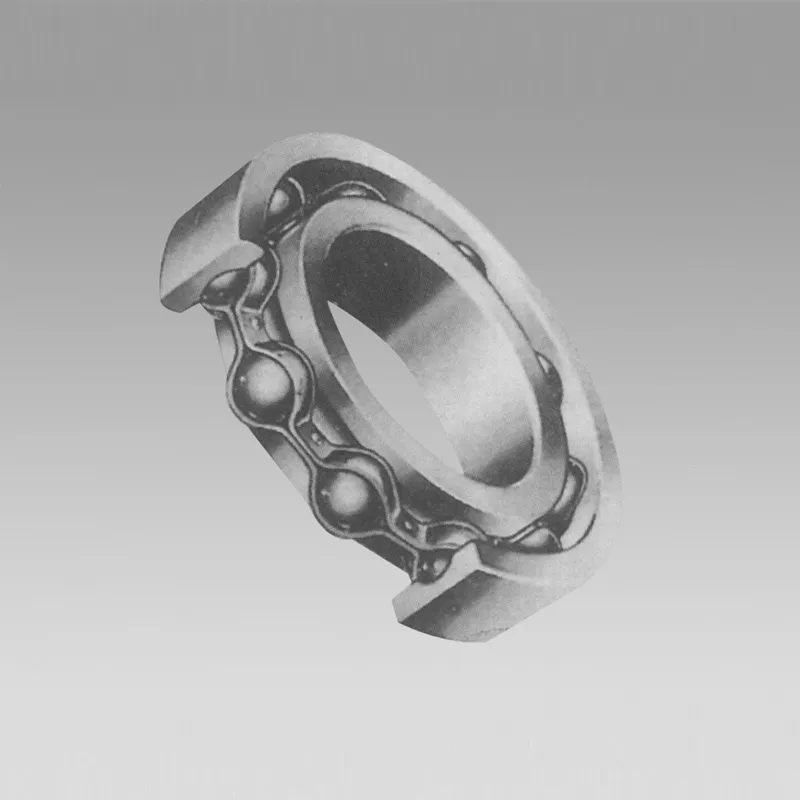
10 月 . 13, 2024 15:24 Back to list
Understanding the Function and Applications of Thrust Roller Bearings in Machinery
Understanding Thrust Roller Bearings
Thrust roller bearings are a vital component in many mechanical systems, engineered to support loads that are primarily axial (along the axis of the bearing) rather than radial (perpendicular to the axis). These bearings are crucial in various applications, from heavy machinery to automotive and aerospace technologies, due to their ability to efficiently handle high axial loads with minimal friction.
Construction and Design
Thrust roller bearings are characterized by their unique design, which typically includes a set of cylindrical rollers positioned between two rings, commonly referred to as the thrust washer and the housing. The arrangement allows the cylindrical rollers to roll in a linear motion, accommodating axial loads while maintaining contact with the thrust surfaces. This design provides a larger surface area for load distribution, which effectively reduces stress on individual components and enhances the bearing's overall lifespan.
There are several types of thrust roller bearings, including cylindrical, spherical, and tapered roller types, each suited for different applications
1. Cylindrical Thrust Roller Bearings These are used primarily in applications where high speeds and heavy loads are present. They are known for their ability to handle significant axial loads and can accommodate some misalignment. 2. Spherical Thrust Roller Bearings Designed to allow for angular misalignment, spherical bearings have a self-aligning design that permits the rollers to adjust slightly, accommodating slight deviations between the shaft and housing. 3. Tapered Thrust Roller Bearings These bearings can support both axial and radial loads, making them versatile. They are commonly used in automotive wheel hubs and machine tool applications where axial stability is crucial.
Applications
The applications of thrust roller bearings are expansive and vary widely across different sectors. In the automotive industry, these bearings are utilized in clutches, transmissions, and steering mechanisms, where they manage the axial loads present during operation. The aerospace sector also relies on thrust roller bearings for critical applications, such as in landing gear and engine components, where reliability and safety are paramount.
In manufacturing, thrust roller bearings are employed in equipment such as vertical mills and gearboxes to ensure smooth operation and extended service life. They can also be found in high-speed machinery and conveyor systems, where they help reduce wear on components and improve efficiency.
thrust roller bearing

Benefits of Thrust Roller Bearings
One of the primary benefits of using thrust roller bearings is their high load-carrying capacity. These bearings can withstand substantial axial loads, which is particularly important in heavy machinery applications. Additionally, their design reduces friction, which translates to less energy consumption and lower operational costs over time.
Thrust roller bearings also tend to have a longer service life compared to other bearing types, primarily due to their ability to distribute loads evenly across the rolling elements. This characteristic reduces localized wear and tear, minimizing the need for frequent replacements and maintenance.
Moreover, thrust roller bearings are relatively simple to install and are compatible with various lubricants, including grease and oil, which can further enhance their performance and lifespan. Their straightforward design allows engineers and technicians to replace and maintain them with minimal complexity.
Challenges and Considerations
Despite their advantages, thrust roller bearings do have some limitations. They are not suitable for radial load applications, meaning they must be selected and installed carefully within a mechanical system to avoid premature failure. Additionally, proper alignment during installation is crucial to ensure that the bearing operates efficiently and maintains its integrity over time.
Furthermore, the operating environment also plays a significant role in the performance of thrust roller bearings. Factors such as temperature, humidity, and exposure to contaminants can influence their durability and efficiency. Therefore, it is essential to consider these factors when selecting the appropriate bearing for a specific application.
Conclusion
In conclusion, thrust roller bearings are an essential element in numerous mechanical systems, providing the capability to handle high axial loads while maintaining efficiency and reliability. Their various types and designs enable their application across a wide range of industries, making them indispensable in the modern engineering world. Understanding their construction, applications, and benefits can help engineers and technicians make informed decisions when integrating these bearings into their projects, ultimately leading to more efficient and effective machinery.
Latest news
-
Unlocking Efficiency with Spherical Roller Bearings
NewsOct.29,2024
-
The Ultimate Guide to Thrust Ball Bearings
NewsOct.29,2024
-
The Power of Thrust Roller Bearings: Engineered for Excellence
NewsOct.29,2024
-
The Power of Deep Groove Ball Bearings for Your Application Needs!
NewsOct.29,2024
-
The Power and Performance of Cylindrical Roller Bearings
NewsOct.29,2024
-
High-Quality Ball Bearing Manufacturing Machines
NewsOct.29,2024
